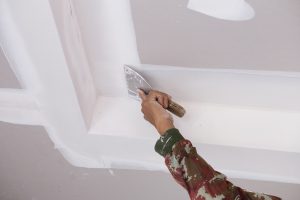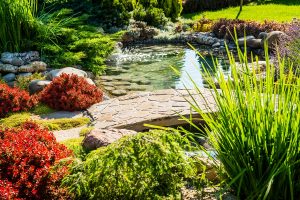For those of us who want our homes to be as environmentally friendly as possible, modern building materials can make eco-friendly living easier than ever. In the past, people have built homes from materials such as wood and brick because these materials were readily available. However, modern technology has also made it easier to find sustainable building materials that are both aesthetically pleasing and environmentally friendly.
New materials make it possible to build energy-efficient and sustainable homes without sacrificing aesthetics or comfort. If you are considering eco-friendly home construction, without further ado, here are some of the best choices for eco-building materials that allow homeowners to construct comfortable, healthy houses that benefit the environment:
1. Timber
Renewable wood is the building material of choice for many green builders because it is strong, durable, and attractive. Wood is also a common choice of material for eco-building materials because it is renewable — planting and harvesting trees replenishes the forest and avoids the depletion and destruction of natural habitats.
Wood can also easily be reused or recycled at the end of a structure’s life, making it ideal for eco homes that are built to last.
2. Strawbale
Straw makes an excellent insulation material that is both inexpensive and natural, with great insulating qualities for eco-friendly home living. The strawbales are compressed into wall panels that are stacked like bricks to create load-bearing walls for houses or outbuildings. They can even be covered in stucco or plaster to make them more attractive options for green building materials.
3. Recycled Rubber Tire Mulch
Rubber from old tires is a popular eco-building material that has a number of advantages. It is waterproof and resists mold, mildew, and the growth of weeds. Rubber tire mulch also insulates soil well, giving added protection to plants grown in raised beds or planters. This eco-friendly landscaping option is durable and easy to install anywhere from your garden to your patio.
4. Recycled Glass as Aggregate
Old glass can be crushed down into recycled aggregate for sidewalks and driveways that look great while remaining extremely durable. The recycled glass used as fine aggregate in concrete mixtures doesn’t include any hazardous materials such as lead or mercury. Aesthetically pleasing and environmentally friendly, this heavy-duty material will last many years on your home’s exterior.
5. Granite

One of the finest choices for countertops is granite that was salvaged from old buildings. This eco-friendly material can be repurposed for home living to create granite kitchen counters, fireplace surrounds, and bathroom vanities that are durable and stunningly beautiful. You can also go with reclaimed granite, which is also ideal for countertops because it can be easily milled and doesn’t have to go through the harsh chemical processes that new stone does.
6. Bamboo Floors
Lightweight bamboo flooring combines the best properties of hardwood and engineered wood flooring to create sustainable materials for homes. Not only does it mimic the look of real hardwood floors at a fraction of the cost, but it is resistant to water damage while still being easy to maintain at home.
7. Hempcrete
Hemp is one of nature’s strongest building materials, perfect for eco-friendly homes because it resists mold and insects. Hempcrete is a mixture of hemp hurds mixed with lime to create a material that can be used in both exterior and interior walls for green dwellings.
8. Plastic Bottles as Paving Stones
Polyethylene plastic bottles are melted down to make strong interlocking paving stones that can be used instead of standard patio pavers. These recycled plastic blocks save landfill space while creating a surprisingly durable surface for winding paths or walkways.
9. Fabric Membrane Roofing
This translucent roof membrane made from 100% post-consumer recycled fabric provides excellent insulation while allowing natural light into buildings. In addition, this energy-efficient material is strong and durable, requiring less maintenance than standard flat roofs.
10. Low VOC Paints & Stains
Traditional paints emit volatile organic chemicals into the air inside homes that can cause respiratory problems for people with allergies or asthma. Low VOC latex paints emit fewer fumes, making them an eco-friendly option for painting exterior walls of green buildings. Choosing low or no VOC stains and sealers can also reduce indoor air pollution in your home, so this is one of the best eco-building materials to use on both interior and exterior surfaces.
As you can see, there are many modern materials available today that allow homeowners to create beautiful spaces while remaining environmentally conscious. Use these ten choices as inspiration whenever you are planning a home renovation project to make a greener difference.






